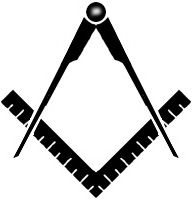...Best of Sicily presents... Best of Sicily Magazine. ... Dedicated to Sicilian art, culture, history, people, places and all things Sicilian. |
by Roberto Savona | ||
Magazine Index Best of Sicily Arts & Culture Fashion Food & Wine History & Society About Us Travel Faqs Contact Map of Sicily |
There were the Beati Paoli, a secret Palermitan brotherhood opposed to the Inquisition and the abuses of the Catholic Church. Criminal organizations are not to be overlooked, and the Mafia, though less important than in times past, is still a force to be reckoned with after two centuries of activity. It has been suggested that the Beati Paoli inspired certain aspects of the Mafia. Knightly orders such as the Teutonic Knights and Templars were once an important force in Sicily, though the latter was suppressed here in the thirteenth century by Frederick II. Founded before 1100, the Order of Malta (Hospitallers or Order of Saint John), which has a number of knights and dames in Sicily, is one of the oldest lay organizations in continuous existence and (with the Savoys' Order of Saints Maurice and Lazarus) the world's oldest order of chivalry. While it is not a "secret society," the Order of Malta is not nearly so open about its inner workings as, say, the Rotary club. If we cast a glance toward the world of freemasonry we see the influences - though not the direct historical link - of the orders of chivalry, with some freemasons claiming the cultural heritage and traditions of the Knights of Malta and Knights Templar despite the inconvenient fact that the actual Order of Malta still exists in Rome. In north-western Europe the first "free" masons were in fact stone masons who organized themselves into groups similar to the medieval guilds. The guilds, called maestranze in Sicily, were skilled craftsmen who banded together to protect their income, profession and social position. This was part of a general trend across Europe, particularly in the cities, where the guilds even built their own churches. It is thought that some form of freemasonry existed in Scotland around 1600, but only in the eighteenth century did it begin to flourish as a secret society transcending its simple foundation as an organization of craftsmen. Freemasonry was not intrinsically anti-Catholic, but it was founded in a predominantly Protestant environment. While it eventually gained widespread acceptance in Britain, that nation's monarchs were at first just as suspicious of it as were the Popes. Despite their own machinations, kings and pontiffs alike were unsympathetic to "secretive" movements, or indeed movements of any kind, that fell outside their control; people in such organizations had the potential power to network with others of like mind, and this could lead to dissent or even revolution. Though certain sovereigns eventually came to accept freemasonry, the Popes never did, and to this day there is a proscription on Catholics becoming freemasons even if the masons will accept Catholics. The fear of revolution was not entirely unfounded. George Washington was a freemason, and the organization served as a basis for secret "networking" against British power in America. Italian masonry certainly influenced events in Italy during the nineteenth century. Giuseppe Garibaldi and some of his associates were freemasons; so was Guiseppe Mazzini and probably Cavour. The Carbonari, secret revolutionary societies opposed to Catholic influences in Italy, were closely allied with Italian freemasons and early on, circa 1820, they may even have been an "active" branch of freemasonry. The Revolutions of 1848, which began in Palermo and spread across Europe, may not have been masonic even if they were in some ways anticlerical, but the unification wars of 1860 certainly bore the mark of freemasonry. In Palermo, Garibaldi was received by Count Federico, a fellow freemason. The Church and Sicily's pre-unitary monarchs of the House of Bourbon sought to suppress these movements while they could, but in the Kingdom of Italy after 1860 the Savoys took a more tolerant position. Further afield, the Church encouraged organizations such as America's Knights of Columbus as an alternative to freemasonry, though that was not the only purpose of such fraternities. It would be inaccurate to describe today's freemasons as a "secret society," for they can hardly be secret when they wear lapel pins to identify themselves and undertake works of public philanthropy, yet some of their rituals, traditions and practices reflect their esoteric past. At the same time, it would not be inaccurate to suggest that freemasonry owes some of its ideals and traditions to the knightly orders and that, in turn, certain masonic practices inspired later institutions, such as American university-student fraternities. Freemasonry is but a footnote in Sicilian history, if an interesting one, but its role should not be ignored. About the Author: Roberto Savona teaches history and writes about historical topics. | |
Top of Page |
 Historically,
Sicily has not been without its secret - or secretive - organizations. Leaving
aside the religious orders (Dominicans, Franciscans, Jesuits) and the hierarchy
of the Catholic Church itself, as well as more recent developments such
as Opus Dei, several come to mind.
Historically,
Sicily has not been without its secret - or secretive - organizations. Leaving
aside the religious orders (Dominicans, Franciscans, Jesuits) and the hierarchy
of the Catholic Church itself, as well as more recent developments such
as Opus Dei, several come to mind.